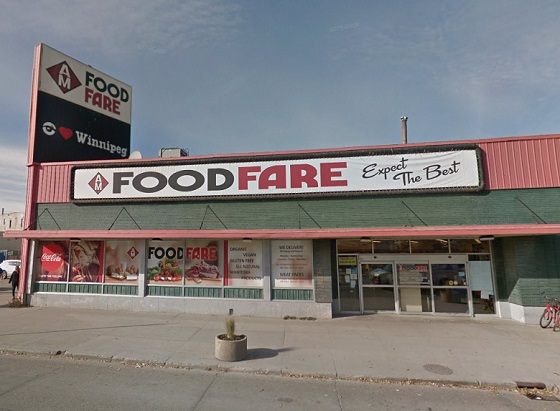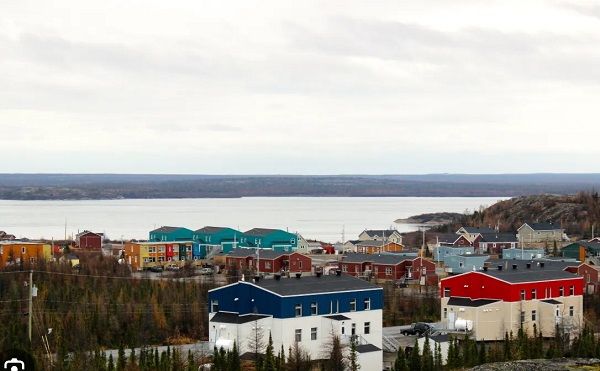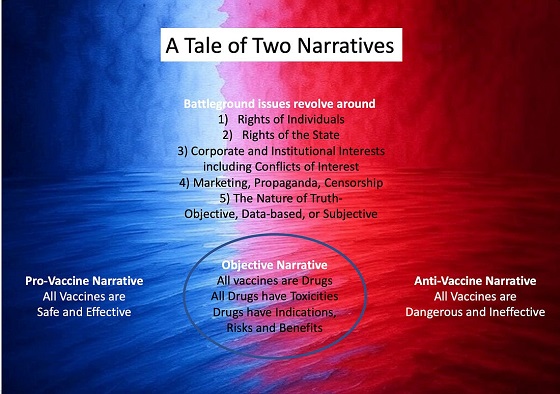Frontier Centre for Public Policy
Inner city shoplifting and Manitoba Premier Wab Kinew

From the Frontier Centre for Public Policy
This problem is only made worse by gullible writers and politicians who make excuses for the thieves. Their excuse is that these people are disadvantaged, so they are less than fully responsible for their criminal conduct. Some sympathetic souls go even further, and suggest that these indigenous shoplifters are simply taking back what is rightfully theirs as “reparations” because the shop owners are on “stolen land”.
Winnipeg, Manitoba is being hit with an epidemic of shoplifting that appears to be out of control. Thieves openly steal expensive items, such as frozen meat, from inner city food stores. Shelves are stripped bare in what are more accurately described as robberies than shoplifting. Victims describe brazen thefts by entitled thieves who become indignant when caught in the act. One store employee, who tried to stop a theft, was told “You are on Treaty 1 territory”. The stores that are hardest hit are often owned by immigrant families who have worked very hard to build their modest businesses. Some have had to close, as a result of the unchecked criminality, and others will follow.
Police protection is weak. Even in rare cases where culprits are caught and prosecuted, sentences are minimal.
The problem of brazen theft from Winnipeg liquor stores reached such a serious level in the recent past that customers at urban liquor stores in Manitoba are now allowed to enter the store only after lining up single file, and producing identification. Liquor prices have risen as a result, because special government employees must be hired to sit at the door to inspect ID’s. Customers must line up outside, even on the coldest winter days, because freeloaders choose to steal liquor. And everyone – including the police – are too shy to confront the robbers.
Other western cities, such as Regina, Saskatoon and Thunder Bay are having similar problems. Even small cities, such as Wetaskiwin, Alberta, are hard hit.
The common element is that all of these cities and towns have significant indigenous populations who migrated to the cities from largely dysfunctional reserves, where attitudes of dependency, entitlement and victimhood prevail. Most arrive poorly educated, with few job skills, but with an expectation that they will be provided for. They proceed to live rough lives on the mean streets of these cities. Many drift to shoplifting and other crime. The inner city thieves are disproportionately from this demographic.
This problem is only made worse by gullible writers and politicians who make excuses for the thieves. Their excuse is that these people are disadvantaged, so they are less than fully responsible for their criminal conduct. Some sympathetic souls go even further, and suggest that these indigenous shoplifters are simply taking back what is rightfully theirs as “reparations” because the shop owners are on “stolen land”. They argue that these indigenous people are victims of a system that gives them no chance to succeed, or that they are suffering from the “intergenerational trauma” presumably caused by the fact that 1 in 6 indigenous children attended residential schools in the past.
The shoplifters readily adopt these excuses, and claim to be victims of “systemic racism”.
But, wait a minute! Isn’t the Premier of Manitoba, Wab Kinew, indigenous? Isn’t he a successful, law-abiding person? And wouldn’t most indigenous Canadians laugh at the idea that they had to steal to survive? How is it that Wab Kinew, and the many other successful indigenous Canadians manage their lives just fine while the shoplifters cannot?
The answer is that Wab succeeded the way all successful people do. He went to school, worked hard, and went where the jobs are. He was fortunate to have competent, caring parents who understood the importance of education and hard work. His parents also understood that assimilation (or, if you prefer, integration) was essential for their son to succeed. Wab’s father had a rough time in residential school, but used what he learned to raise a son who has become a provincial premier.
The fact that Kinew is fully assimilated does not prevent him from celebrating his indigenous heritage. Recently, a video of him energetically performing a prairie chicken dance went viral. It showed indigenous youth that they too can be both successful Canadians – and proudly indigenous – at the same time.
It is clear from watching him dancing so vigorously that he would have been a formidable warrior in pre-contact indigenous hunting culture. Colonialism ended that possibility. But it is equally clear that he, and the other indigenous people who were willing to learn the new ways, received a lot in return from the settlers. He is now an articulate, literate, thoroughly modern man, thanks to “settler colonialism”. Colonialism has also given him an expected lifespan more than double that of yesterday’s hunter-gatherers. Colonialism gave at least as much as it took from him.
Kinew’s memoir, “The Reason You Walk” describes someone determined to live his life not as a victim, but as a confident indigenous Canadian.
He built his own life – making mistakes along the way – but learning from those mistakes, and is now the leader of a province – and lauded as a possible future prime minister. He offers no apologies to critics who suggest that an indigenous person who is successful is somehow “selling out” indigenous people. His famous reply to that old saw is “Aboriginal success is the best form of reconciliation”.
Don’t expect to find Wab Kinew stealing frozen hamburger from a Food Fare store anytime soon.
But here’s the lesson indigenous youth can learn from the example Wab Kinew, and other successful indigenous people have set: “If they can do it, so can you”. They should also tell the apologists who want to give them tired excuses – excusing theft as “reparations” for perceived past wrongs, or “intergenerational trauma” – that they, like Wab, refuse to live their lives as “victims”.
In short, the solution to the shoplifting problem is not to condone theft. It is not to treat criminals differently because they are indigenous. It is not to offer them excuses. The solution is to create more Wab Kinews.
And that’s up to Indigenous parents. No government can do that for them. For many families, like Wab’s, that will include the difficult decision to move from dead-end reserves. But if they have the same commitment to their children’s education and upbringing that Wab’s parents had there is no reason that they can’t raise successful children in this country.
Long before he became Manitoba’s premier, Wab Kinew, regularly entertained listeners on CBC Radio. He was a refreshing, common sense voice, and always refused to play the victim. He never failed to remind young indigenous people that Canada worked just fine for him.
And, with a bit of grit and hard work, it can work for them too.
Brian Giesbrecht, retired judge, is a Senior Fellow at the Frontier Centre for Public Policy.
Education
Our Kids Are Struggling To Read. Phonics Is The Easy Fix

From the Frontier Centre for Public Policy
One Manitoba school division is proving phonics works
If students don’t learn how to read in school, not much else that happens there is going to matter.
This might be a harsh way of putting it, but it’s the truth. Being unable to read makes it nearly impossible to function in society. Reading is foundational to everything, even mathematics.
That’s why Canadians across the country should be paying attention to what’s happening in Manitoba’s Evergreen School Division. Located in the Interlake region, including communities like Gimli, Arborg and Winnipeg Beach, Evergreen has completely overhauled its approach to reading instruction—and the early results are promising.
Instead of continuing with costly and ineffective methods like Reading Recovery and balanced literacy, Evergreen has adopted a structured literacy approach, putting phonics back at the centre of reading instruction.
Direct and explicit phonics instruction teaches students how to sound out the letters in words. Rather than guessing words from pictures or context, children are taught to decode the language itself. It’s simple, evidence-based, and long overdue.
In just one year, Evergreen schools saw measurable gains. A research firm evaluating the program found that five per cent more kindergarten to Grade 6 students were reading at grade level than the previous year. For a single year of change, that’s a significant improvement.
This should not be surprising. The science behind phonics instruction has been clear for decades. In the 1960s, Dr. Jeanne Chall, director of the Harvard Reading Laboratory, conducted extensive research into reading methods and concluded that systematic phonics instruction produces the strongest results.
Today, this evidence-based method is often referred to as the “science of reading” because the evidence overwhelmingly supports its effectiveness. While debates continue in many areas of education, this one is largely settled. Students need to be explicitly taught how to read using phonics—and the earlier, the better.
Yet Evergreen stands nearly alone. Manitoba’s Department of Education does not mandate phonics in its public schools. In fact, it largely avoids taking a stance on the issue at all. This silence is a disservice to students—and it’s a missed opportunity for genuine reform.
At the recent Manitoba School Boards Association convention, Evergreen trustees succeeded in passing an emergency motion calling on the association to lobby education faculties to ensure that new teachers are trained in systematic phonics instruction. It’s a critical first step—and one that should be replicated in every province.
It’s a travesty that the most effective reading method isn’t even taught in many teacher education programs. If new teachers aren’t trained in phonics, they’ll struggle to teach their students how to read—and the cycle of failure will continue.
Imagine what could happen if every province implemented structured literacy from the start of Grade 1. Students would become strong readers earlier, be better equipped for all other subjects, and experience greater success throughout school. Early literacy is a foundation for lifelong learning.
Evergreen School Division deserves credit for following the evidence and prioritizing real results over educational trends. But it shouldn’t be alone in this.
If provinces across Canada want to raise literacy rates and give every child a fair shot at academic success, they need to follow Evergreen’s lead—and they need to do it now.
All students deserve to learn how to read.
Michael Zwaagstra is a public high school teacher and a senior fellow at the Frontier Centre for Public Policy.
Economy
Support For National Pipelines And LNG Projects Gain Momentum, Even In Quebec

From the Frontier Centre for Public Policy
Public opinion on pipelines has shifted. Will Ottawa seize the moment for energy security or let politics stall progress?
The ongoing threats posed by U.S. tariffs on the Canadian economy have caused many Canadians to reconsider the need for national oil pipelines and other major resource projects.
The United States is Canada’s most significant trading partner, and the two countries have enjoyed over a century of peaceful commerce and good relations. However, the onset of tariffs and increasingly hostile rhetoric has made Canadians realize they should not be taking these good relations for granted.
Traditional opposition to energy development has given way to a renewed focus on energy security and domestic self-reliance. Over the last decade, Canadian energy producers have sought to build pipelines to move oil from landlocked Alberta to tidewater, aiming to reduce reliance on U.S. markets and expand exports internationally. Canada’s dependence on the U.S. for energy exports has long affected the prices it can obtain.
One province where this shift is becoming evident is Quebec. Historically, Quebec politicians and environmental interests have vehemently opposed oil and gas development. With an abundance of hydroelectric power, imported oil and gas, and little fossil fuel production, the province has had fewer economic incentives to support the industry.
However, recent polling suggests attitudes are changing. A SOM-La Presse poll from late February found that about 60 per cent of Quebec residents support reviving the Energy East pipeline project, while 61 per cent favour restarting the GNL Quebec natural gas pipeline project, a proposed LNG facility near Saguenay that would export liquefied natural gas to global markets. While support for these projects remains stronger in other parts of the country, this represents a substantial shift in Quebec.
Yet, despite this change, Quebec politicians at both the provincial and federal levels remain out of step with public opinion. The Montreal Economic Institute, a non-partisan think tank, has documented this disconnect for years. There are two key reasons for it: Quebec politicians tend to reflect the perspectives of a Montreal-based Laurentian elite rather than broader provincial sentiment, and entrenched interests such as Hydro-Québec benefit from limiting competition under the guise of environmental concerns.
Not only have Quebec politicians misrepresented public opinion, but they have also claimed to speak for the entire province on energy issues. Premier François Legault and Bloc Québécois Leader Yves-François Blanchet have argued that pipeline projects lack “social licence” from Quebecers.
However, the reality is that the federal government does not need any special license to build oil and gas infrastructure that crosses provincial borders. Under the Constitution, only the federal Parliament has jurisdiction over national pipeline and energy projects.
Despite this authority, no federal government has been willing to impose such a project on a province. Quebec’s history of resisting federal intervention makes this a politically delicate issue. There is also a broader electoral consideration: while it is possible to form a federal government without winning Quebec, its many seats make it a crucial battleground. In a bilingual country, a government that claims to speak for all Canadians benefits from having a presence in Quebec.
Ottawa could impose a national pipeline, but it doesn’t have to. New polling data from Quebec and across Canada suggest Canadians increasingly support projects that enhance energy security and reduce reliance on the United States. The federal government needs to stop speaking only to politicians—especially in Quebec—and take its case directly to the people.
With a federal election on the horizon, politicians of all parties should put national pipelines and natural gas projects on the ballot.
Joseph Quesnel is a senior research fellow with the Frontier Centre for Public Policy.
-

 2025 Federal Election2 days ago
2025 Federal Election2 days agoNo Matter The Winner – My Canada Is Gone
-

 2025 Federal Election2 days ago
2025 Federal Election2 days agoASK YOURSELF! – Can Canada Endure, or Afford the Economic Stagnation of Carney’s Costly Climate Vision?
-

 Alberta2 days ago
Alberta2 days agoMade in Alberta! Province makes it easier to support local products with Buy Local program
-

 2025 Federal Election2 days ago
2025 Federal Election2 days agoCSIS Warned Beijing Would Brand Conservatives as Trumpian. Now Carney’s Campaign Is Doing It.
-

 2025 Federal Election1 day ago
2025 Federal Election1 day agoInside Buttongate: How the Liberal Swamp Tried to Smear the Conservative Movement — and Got Exposed
-

 Alberta2 days ago
Alberta2 days agoProvince to expand services provided by Alberta Sheriffs: New policing option for municipalities
-

 Bruce Dowbiggin1 day ago
Bruce Dowbiggin1 day agoIs HNIC Ready For The Winnipeg Jets To Be Canada’s Heroes?
-

 Dr. Robert Malone1 day ago
Dr. Robert Malone1 day agoThe West Texas Measles Outbreak as a Societal and Political Mirror






